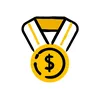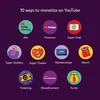In addition to our Community Guidelines, creators need to meet an even higher bar to join the YouTube Partner Program and make money on YouTube. Every channel applying to YPP undergoes review by a trained rater to make sure it meets our policies. We also regularly review and remove channels that don’t comply with our policies. For example, we’ve been removing channels from YPP that repeatedly brush up against our hate speech, harassment and misinformation policies.
Since advertising has been at the core of creators’ revenue, we need to ensure that advertisers have faith in our systems and feel comfortable with where their ads appear. Advertisers do not want their brands associated with problematic content and actors, and we’ve seen first-hand that they vote with their feet. When advertisers lack trust in our systems, they scale back their spend on YouTube. This affects the entire ecosystem, not just the very small number of bad actors
We’ve partnered closely with advertisers to address their feedback, and today we're at least 99% effective at ensuring brand safety for advertisers. As a result, YouTube was the first digital platform to be accredited for content level brand safety by the Media Rating Council. YouTube was also one of the founding members of the Global Alliance for Responsible Media (GARM), a multi-stakeholder initiative to improve digital and brand safety with advertisers. As part of this initiative, we’ve helped establish a set of industry standards to define content not suitable for advertising.
With improved systems and increased advertiser trust, we’re growing the pie and making channels in YPP more successful as a whole. The number of new channels joining YPP in 2020 more than doubled when compared to the year before. And the number of YouTube channels making 6 figures in revenue or more is up more than 35% year over year in the U.S.


